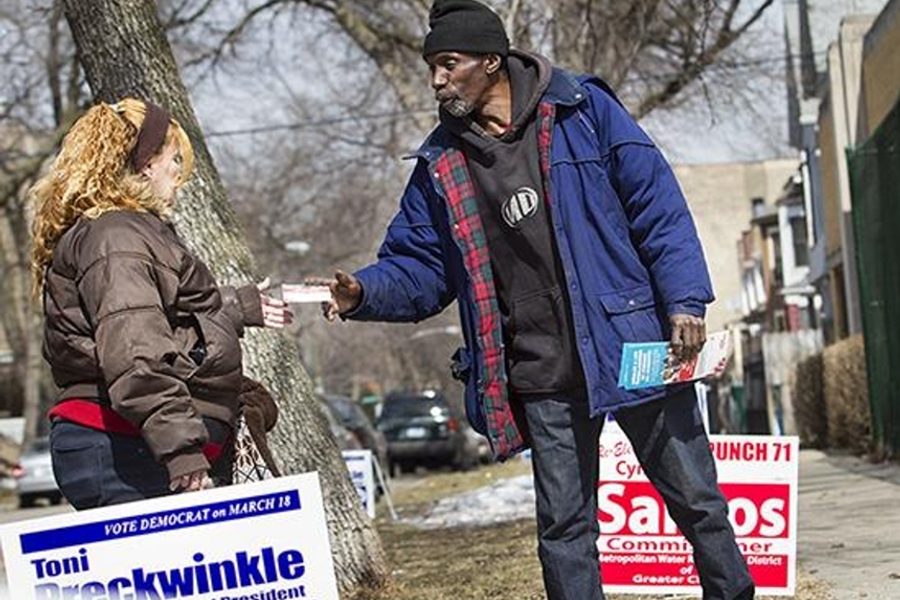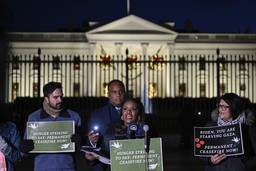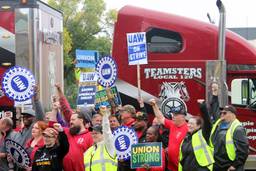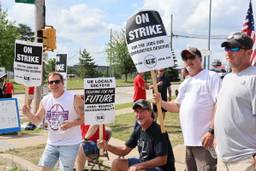Chicago Voters Overwhelmingly Support $15 Living Wage
Charlotte Lait and Patrick James Drennan

Reprinted with permission from The Chicago Reporter.
Chicago’s referendum on a $15-an-hour minimum wage is the latest round in the fight for higher wages in the city.
In recent years, proposals to raise the city’s minimum wage have failed to win support in City Hall. But on Tuesday, labor activists and progressives celebrated the symbolic victory they say is needed to press for a pay hike for Chicago’s lowest-paid workers — many of whom are African Americans, Latinos and immigrants.
The measure was on ballots in 103 precincts across 20 of the city’s 50 wards reaching about 5 percent of registered voters — half in predominantly African American communities on the South Side. With 100 precincts reporting, 86 percent of the roughly 9,800 voters who cast ballots supported increasing the minimum wage.
The non-binding referendum targeted companies earning more than $50 million annually, mirroring national efforts by focusing on large and mostly non-union employers to avoid push-back from small businesses.
The vote came at a time when the chorus of discontent about a range of issues in Chicago, from jobs to the increasing cost of living, is growing louder. Meanwhile, the living wage movement is gaining steam as well.
This is an important indication of where this city is going,” said 2nd Ward Ald. Bob Fioretti, a member of the City Council’s Progressive Reform Coalition, which backed the referendum. “Today, I was hearing from people all across the city that they are in favor of raising the minimum wage, and especially with corporations that are making over $50 million. Now we’re looking at organizing an ordinance on this issue, and we have the people behind us.”
Other supporters included 4th Ward Ald. Will Burns and 1st Ward Ald. Joe Moreno, who are not members of the reform coalition.
Mayor Rahm Emanuel and Gov. Pat Quinn both have advocated for increases to the minimum wage, neither proposal comes close to the $15-an-hour wage supporters of Tuesday’s referendum want. Emanuel’s plan for a city minimum wage (if the state does not increase it) calls for a $1-an-hour increase for the next two years, with further increases pegged to inflation. Quinn wants an increase in the state’s minimum wage from $8.25 to $10 an hour.
Tuesday’s referendum was spearheaded by the Raise Chicago coalition, an umbrella group of labor and community organizers including ONE Northside (formed with the merger of Organization of the NorthEast and Lakeview Action Coalition), the Grassroots Collaborative and Action Now. Burns said the referendum highlighted the plight of the growing number of low-wage workers.
More and more workers are being left behind,” Burns said before the vote. “The American Dream is becoming harder to achieve, in part because people can’t afford it anymore.
Moreno believes large employers must bear their share of the burden. “The more wages and benefits [they] pay, the less we subsidize,” he said. “Taxpayers are subsidizing [workers] because Walmart is not providing it for them.”
Local spark for a national movement
Nationally, organizers of the living-wage movement are pushing local government to support wage increases tied to the cost of living in a specific community — not a minimum set by state or federal government.
Tuesday’s referendum was designed to gauge public opinion on the subject.
“It’s a symbolic move. It tells us where the pulse of the people [is], and whether people in Chicago see this as an important issue,” Fioretti said before the vote. “That’s important to the aldermen supporting the referendum.”
The measure received the most support in predominantly African-American wards on the South and West sides, such as the 20th (96 percent in favor) and 28th (95 percent). It received less support in the predominantly white wards on the Northwest Side, such as the 35th and 48th (62 percent).
While a handful of cities have established a minimum wage, organizers in Chicago have struggled to get support at City Hall. A 2006 ordinance sought to require billion-dollar retailers with stores larger than 90,000 square feet to pay their workers $10 an hour. The proposal passed the City Council by 35-14 and had significant public support, but then-mayor Richard M. Daley vetoed it.
And in 1996, labor unions and local community organizers pressured City Hall to consider a living wage ordinance for developers in TIF zones— tax increment financing zones, which are special districts created to plow tax dollars back into area development. The ordinance would have increased the minimum wage by 79 percent, to $7.60 per hour, for employees of developers who received city money or other municipal benefits. Daley refused to support the ordinance, claiming it would overburden Chicago’s budget.
Chicago’s referendum adds fuel to the living wage movement, which is gaining momentum after decades of grassroots campaigning by labor unions, community organizers and other groups. Public support, too, is strong: A March 2013 Gallup Poll found that 70 percent of those surveyed were in favor of a hike in the minimum wage, including 90 percent of Democratic voters and 50 percent of Republican voters.
In the last two years, four states have passed bills to raise the minimum wage: California, Connecticut, New York, and Rhode Island. Cities including Albuquerque, Santa Fe, San Francisco, Seattle and Tacoma increased their minimum wages above the federal level of $7.25.
And last month, President Barack Obama signed an executive order increasing the minimum wage for federal contract workers to $10.10 per hour from $7.25. He has called on Congress to do the same and raise the federal minimum wage, as part of his second-term focus on reducing income inequality.
“I think Obama is responding to pressure from what’s been happening in the states and localities, who are taking matters into their own hands,” said Alice O’Connor, a poverty scholar and public policy professor at the University of California at Santa Barbara.
Raising the wage is important, she added, because “such a big part of inequality is the erosion of the minimum wage at the bottom.” Adjusted for inflation, the current minimum wage is lower than it was in 1968, according to data analysis by the Bureau of Labor Statistics.
The living wage movement has been building since the 1970s, O’Connor said, when the standard of living of the working class began to erode and the income gap between the working class and the wealthiest Americans began to grow. The wage decline coincided with the decline of organized labor, and the 2008 recession exacerbated the trend, and sparked the current public discussion on income inequality, she concluded.
“Inequality comes in and out of national consciousness, but recently has stuck around longer because people have begun to recognize that inequality in [their own situations],” O’Connor said. “With the onset of the recession, a much broader swathe of people began to immediately feel the impact of inequality. That helped increase coalition-building [because] the thing people find easiest to rally around is ‘What are we going to do about wages?’ ”
Patrick Brosnan, executive director of the Brighton Park Neighborhood Council, works with the Center for Economic Progress to provide pro bono tax filing services for low-income families. He said it’s normal to see people who have up to seven W-2 forms earning less than $10,000 a year.
“This is what our families are experiencing,” Brosnan said. “They’re living paycheck to paycheck and not even knowing which company is going to be sending the paycheck to them.”

I hope you found this article important. Before you leave, I want to ask you to consider supporting our work with a donation. In These Times needs readers like you to help sustain our mission. We don’t depend on—or want—corporate advertising or deep-pocketed billionaires to fund our journalism. We’re supported by you, the reader, so we can focus on covering the issues that matter most to the progressive movement without fear or compromise.
Our work isn’t hidden behind a paywall because of people like you who support our journalism. We want to keep it that way. If you value the work we do and the movements we cover, please consider donating to In These Times.



